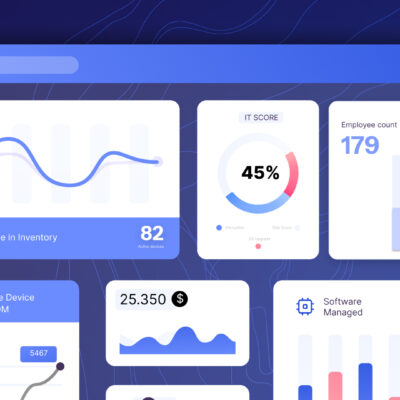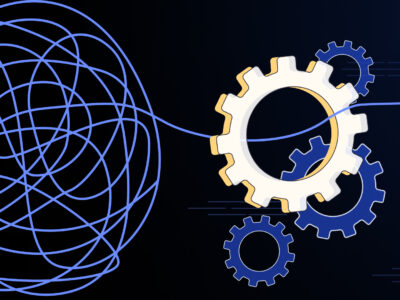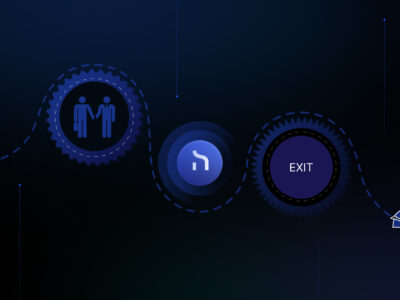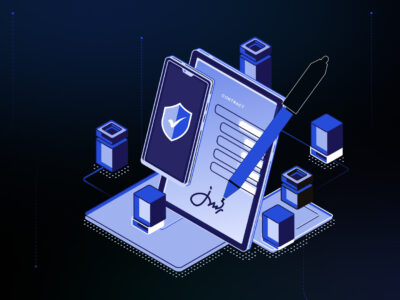5 Fool-proof Steps to Stay Safe from Cybersecurity Threats
“Cybersecurity statistics indicate that there are 2,200 cyber attacks per day, with a cyber attack happening every 39 seconds on average.”
~ Astra
Shocking, isn’t it?
As technology evolves, the landscape of cyberattacks has become more sophisticated and menacing than ever before. IT managers, CTOs, and business owners find themselves at the forefront of the battle against cyber threats, as the consequences of a successful attack can be devastating for any organisation.
What are Cybersecurity Threats?
Cybersecurity threats refer to malicious activities that aim to compromise the confidentiality, integrity, and availability of an organisation’s data and IT infrastructure. These threats are carried out by cybercriminals and hackers who exploit vulnerabilities in networks, systems, and applications. The ultimate goal of cyber threats can range from stealing sensitive information and financial gain to causing disruption or tarnishing an organisation’s reputation.
Different Types of Cybersecurity Threats

- Phishing Attacks: Phishing is one of the most prevalent cyber threats that organisations face today. Attackers use deceptive emails, messages, or websites to trick employees into divulging sensitive information, such as login credentials or financial data. According to a 2023 article by Astra, over six months in 2022, there were 255 million phishing attacks in total.
- Ransomware: Ransomware attacks involve encrypting an organisation’s data and demanding a ransom for its release. These attacks have seen a significant surge, with 71% of businesses reported falling victim to ransomware attacks in 2022. Cybercriminals often target businesses of all sizes, knowing that data loss can lead to severe financial and reputational damage.
- Distributed Denial of Service (DDoS): DDoS attacks overwhelm a website or online service by flooding it with an excessive amount of traffic. These attacks can lead to downtime, lost revenue, and customer dissatisfaction. In the first six months of 2022, there was a 60% increase in malicious DDoS attacks, leaving many businesses vulnerable to disruptions and downtime.
- Insider Threats: Insider threats involve malicious or negligent actions by current or former employees, contractors, or partners. These individuals may intentionally leak sensitive information, compromise systems, or inadvertently cause data breaches.
- Zero-day Exploits: Zero-day exploits target unpatched vulnerabilities in software or hardware, for which there are no known fixes or defence. Cybercriminals exploit these vulnerabilities before the developers can release a patch, making them highly dangerous and challenging to combat.
- Malware: Malicious software designed to gain unauthorised access, disrupt operations, or steal sensitive data.
Impacts of Cyber Attacks on Business
The impact of a cyber attack on a business can be catastrophic. Beyond immediate financial losses, organisations often face long-term consequences, including damage to their reputation and customer trust. Let’s explore some alarming statistics to highlight the severity of cyber attacks on businesses.
- Financial Loss: The expenses include investigation, remediation, legal fees, and potential regulatory fines. According to IBM, the global average cost of a data breach in 2023 was $4.45 million, a 15% increase over 3 years.
- Reputational Damage: A cyber breach can erode trust among customers, partners, and stakeholders, leading to long-term reputational damage. After a cyberattack, 31% of consumers said they would stop doing business with the affected company, while 65% reported losing trust in the organisation. Rebuilding a damaged reputation can take years and may result in losing valuable customers and business opportunities.
- Business Disruption: Cyber attacks can cause significant downtime and disruptions to business operations. As per a 2023 report by HBR, publicly traded companies suffered an average decline of 7.5% in their stock values after a data breach, coupled with a mean market cap loss of $5.4 billion.
- Regulatory Consequences: With the introduction of stringent data protection regulations like the General Data Protection Regulation (GDPR), organisations that fail to protect customer data can face severe penalties. As per an article by CNBC, GDPR fines totalled $1.2 billion in 2021.
What to learn more about the impact of cyberattacks on business? Check out this article: Here’s How Much a Cyberattack Can Actually Cost You.
Tips to Avoid Cybersecurity Threats
To safeguard your organisation from cyber threats, it is imperative to adopt a proactive and multi-layered approach to cybersecurity. Here are five fool-proof steps to stay ahead of cybersecurity threats:
- Employee Cybersecurity Awareness Training: Educate all employees, from the top management to frontline staff, about cybersecurity best practices and the risks associated with cyber threats. Regularly conduct training sessions and simulated phishing exercises to reinforce awareness and encourage a security-conscious culture.
- Regular Software Patching and Updates: Keep all software, operating systems, and applications up to date with the latest security patches and updates. Cyber attackers often exploit known vulnerabilities, making regular updates crucial to thwarting potential attacks.
- Implement Multi-factor Authentication (MFA): MFA adds an extra layer of security by requiring users to provide multiple forms of authentication before accessing critical systems or data. This significantly reduces the risk of unauthorised access, even if login credentials are compromised.
- Network Segmentation: Segment your network to compartmentalise sensitive data and limit access only to authorised personnel. By isolating critical assets, you can contain potential breaches and minimise the damage caused by cyberattacks.
- Invest in Cybersecurity Solutions: Deploy advanced cybersecurity solutions, such as firewall protection, intrusion detection systems, and endpoint security tools, to detect and respond to threats in real time. Additionally, consider adopting Managed Detection and Response (MDR) services to augment your organisation’s security capabilities. Statistics show that 66% of CIOs say they plan to increase investment in cybersecurity.
Cybersecurity threats continue to evolve, and the stakes have never been higher for businesses. As It leaders, you must be vigilant and proactive to protect valuable assets from the relentless onslaught of cyber threats. Prevention is better than cure, more so when it comes to cyberattacks.
If you want to know how ZenAdmin can be your technology partner in safeguarding your devices and valuable data, get a free demo here.












